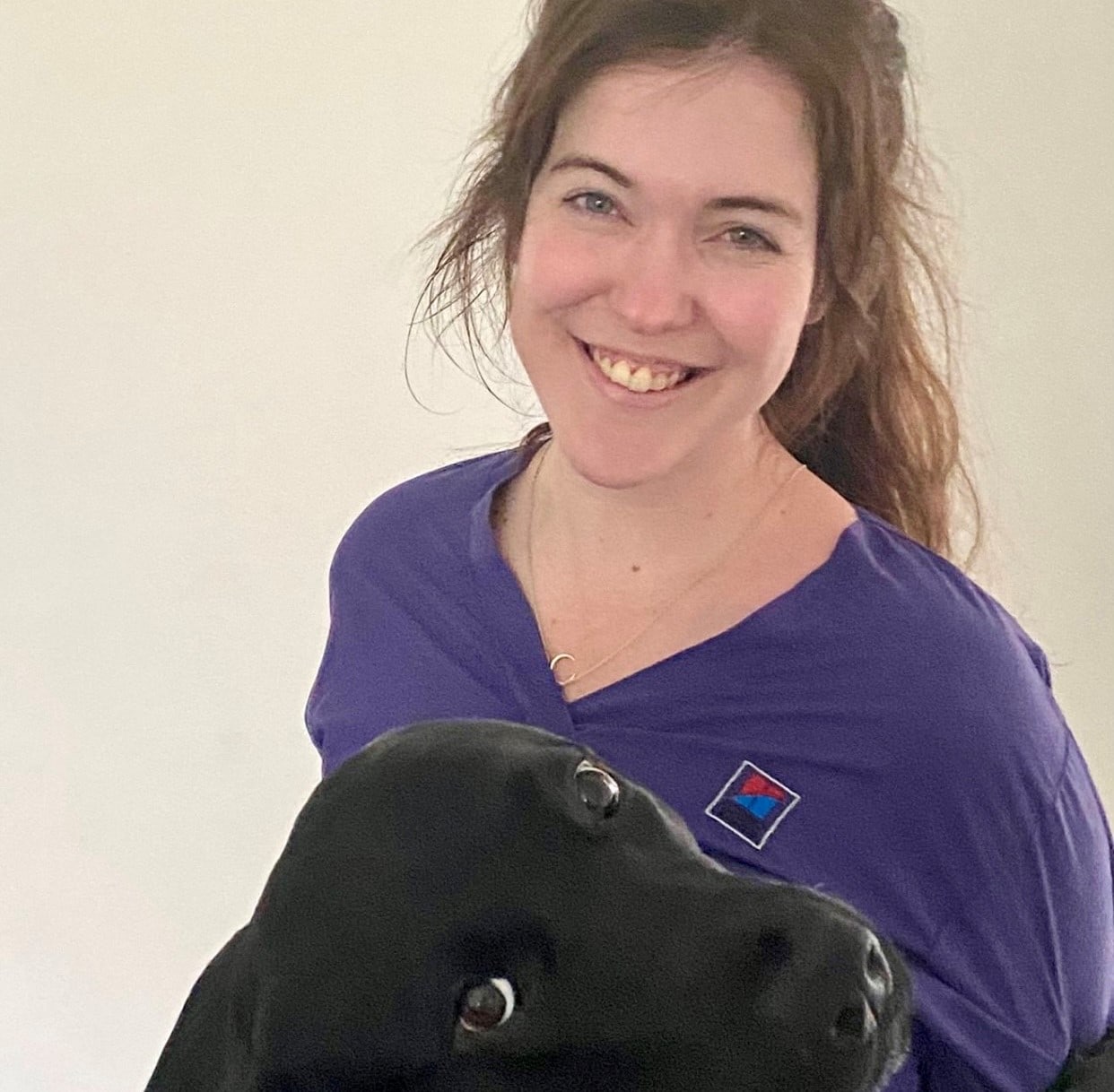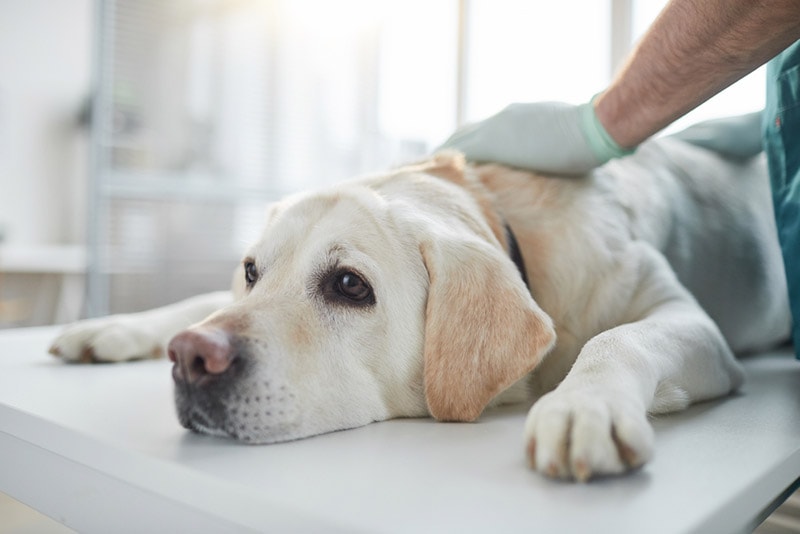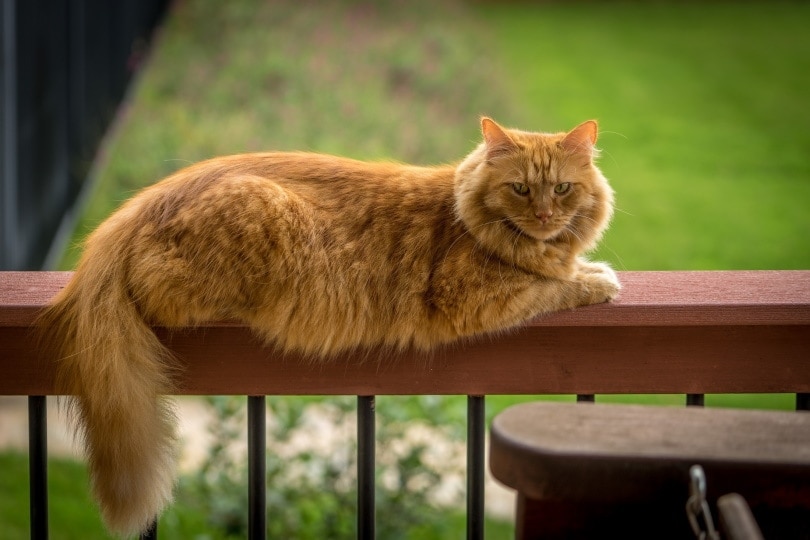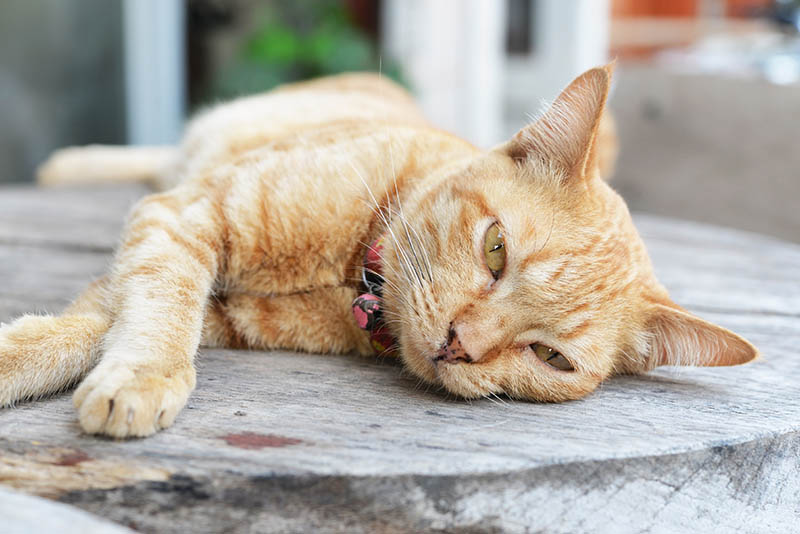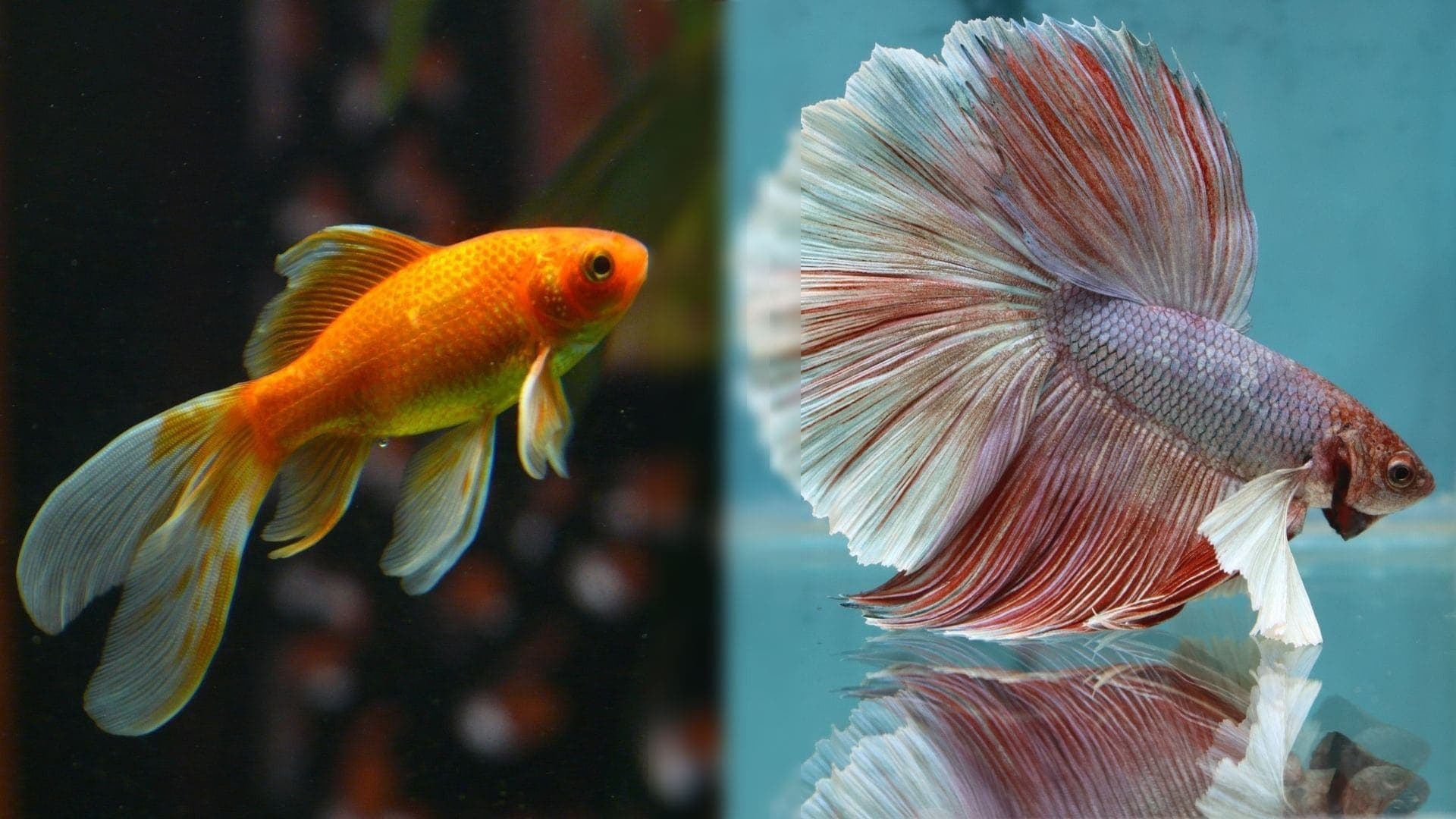When to See a Veterinary Neurologist for Your Cat (Vet Answer)

Updated on
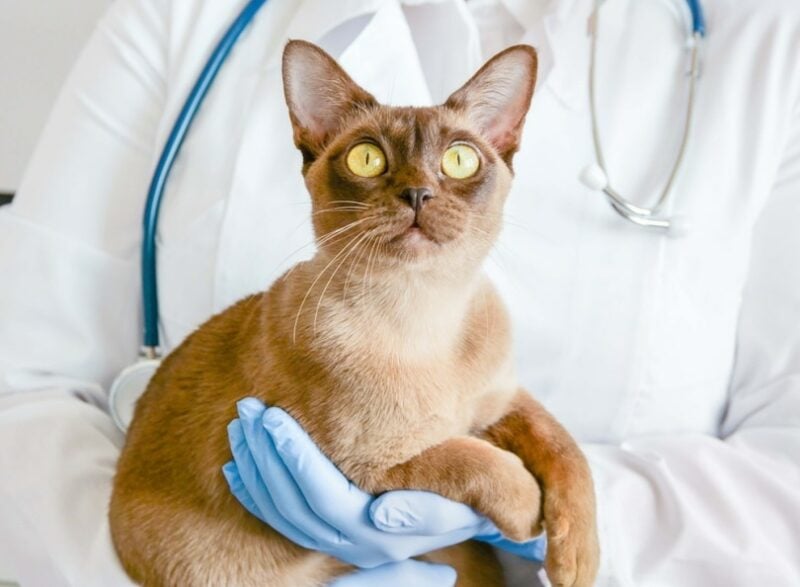
Is your cat off balance, or does her head tilt to one side? Does she seem disoriented or has she experienced a sudden change in personality? Your cat may be suffering from a neurological disorder.
While many of your cat’s medical needs can be met by its primary care veterinarian, some conditions need specialized care. These include conditions of the nervous system. For these conditions, your primary care veterinarian may recommend that your cat sees a veterinary neurologist.
When Should My Cat See A Veterinary Neurologist?
Board-certified veterinary neurologists specialize in diagnosing, treating, and managing disorders of the brain, spinal cord, nerves, and muscles of companion animals. These highly skilled veterinarians have completed several years of additional training and have passed an examination that evaluates their knowledge and skills in the field of veterinary neurology. Veterinary neurologists therefore possess extensive knowledge of an animal’s nervous system.
Your primary care veterinarian may recommend referral to a veterinary neurologist if diagnosing or treating your cat’s neurological condition requires specialized equipment and expertise.
Some of the most common signs of a neurological condition that may indicate that your cat needs to be seen by a veterinary neurologist include the following:
- Seizures
- Sudden blindness
- Nystagmus (eyes darting from side to side)
- Behavioral changes
- Head tilt
- Circling
- Disorientation
- Incoordination
- Weakness
- Trouble walking
- Tremors
- Balance issues
- Changes in litter box behavior
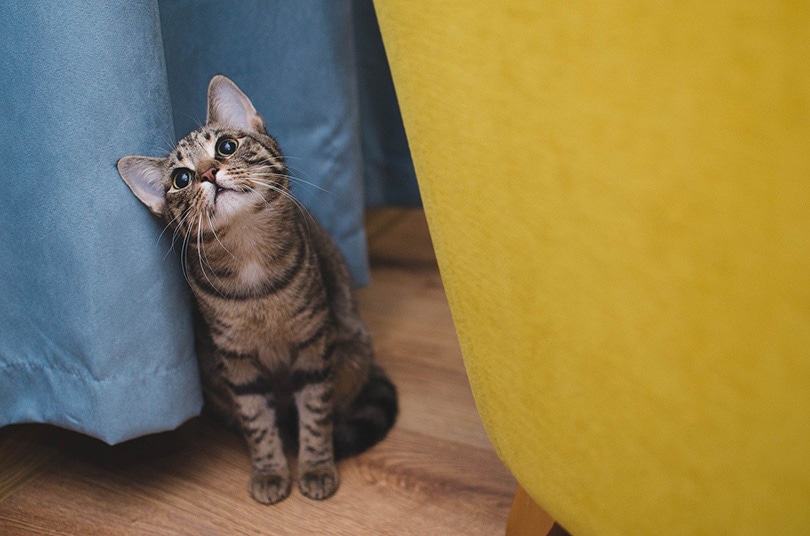
What Can I Expect At My Cat’s Veterinary Neurologist Appointment?
The veterinary neurologist will start by taking your cat’s detailed medical history, followed by a physical exam and finally a neurological exam. A neurological exam is a series of tests that assesses a cat’s mental status, reflexes, coordination, strength, and sensation in order to evaluate its brain and nervous system function. The neurological exam will help the neurologist determine whether your cat has a neurological condition and the most likely location of the issue within the nervous system.
Once the examination is complete, the veterinary neurologist will discuss their findings, any further testing that needs to be performed, and the best course of action going forward.
- Magnetic Resonance Imaging (MRI)
- Computed Tomography (CT scan)
- Myelograms
- Spinal fluid analysis
- Electrodiagnostics
- Muscle/nerve biopsy
Common Feline Neurological Disorders
Some common neurological conditions that may require your cat to be seen by a veterinary neurologist include the following:
Cognitive Dysfunction Syndrome
Cognitive dysfunction syndrome (CDS) affects senior cats and is characterized by cognitive decline. It’s sometimes referred to as senility or dementia. Cats with CDS undergo behavioral changes – they may seem confused and disoriented, become aggressive or clingy, urinate or defecate outside of their litter box, or have changes in their sleep patterns.
Vestibular Disease
The vestibular system is responsible for balance, spatial orientation, and coordination. Cats with vestibular disease develop incoordination, circling to one side, a head tilt, nystagmus (eyes darting from side to side), and nausea or vomiting. Most cases are idiopathic, meaning the exact cause is unknown.
Other causes include middle- and inner-ear infections, polyps, certain toxins, strokes, and tumors.

Brain Tumors
The most common sign of a brain tumor in cats is seizures, especially seizures that occur after five years of age. Other signs of a brain tumor include circling, incoordination, behavioral changes, and vision problems.
The most common brain tumor in cats is a meningioma. A meningioma develops in the thin protective tissue (known as the meninges) that covers a cat’s brain.
Epilepsy
Epilepsy is a neurological condition characterized by recurrent seizures. The condition stems from abnormal electrical activity in a cat’s brain. Although this condition can be secondary to head injuries, brain tumors, or metabolic abnormalities, it can also be idiopathic meaning that there is no identifiable cause.
Trauma
Unfortunately, outdoor cats are frequently hit by cars. Some may experience head trauma and die, while others get their tails run over and develop “tail-pull injury”. This is a common neurological condition in cats where an injury to the tail causes serious nerve damage. Cats with this condition have flaccid tails that hang down limply as well as urinary and fecal incontinence.
Hyperesthesia Syndrome
Hyperesthesia syndrome (also known as “rolling skin syndrome,”) is extreme skin sensitivity often in the area just in front of a cat’s tail. Cats with feline hyperesthesia may groom excessively, self-mutilate, and become aggressive when touched. The cause is not entirely known – some veterinarians think it could be related to obsessive compulsive disorders, while others feel is could be due to a seizure type problem.
Cerebellar hypoplasia
Cerebellar hypoplasia is a neurological condition in which the cerebellum—the part of the brain that coordinates movement—fails to develop properly. The condition most commonly occurs when a pregnant cat becomes infected with feline panleukopenia virus and passes the infection to her unborn kittens. Typical symptoms include tremors, incoordination, and swaying from side to side while trying to walk.
Hydrocephalus
Hydrocephalus (water on the brain) is a condition in which there is an abnormal accumulation of cerebrospinal fluid causing enlargement of a cat’s skull and compression of the brain. Hydrocephalus can be congenital, meaning that the condition develops before birth and kitten is born with it, or acquired, meaning that the condition develops later in life as a result of a tumor, inflammation, or an abscess. Signs of hydrocephalus include a dome-shaped head, blindness, seizures, or abnormal breathing.
Final Thoughts
Your cat may need to be seen by a veterinary neurologist if it’s showing signs of a neurological disorder such as seizures, incoordination, circling, or a change in behavior. If you suspect that your cat has a neurological condition or if it’s showing any behavior that’s out of the ordinary, it’s essential to consult with your veterinarian.
Your primary care veterinarian may recommend referral to a veterinary neurologist if diagnosing or treating your cat’s neurological condition requires specialized equipment and expertise. Veterinary neurologists are experts in the field of neurology and are able to offer specialized testing, treatment, and management of neurological conditions.
Related Reads:
- 8 Signs of Nerve Damage in Cats to Watch Out For (Vet Answer)
- Can Cats Have Down Syndrome? Our Vet Explains
Featured Image Credit: Elpisterra, Shutterstock


